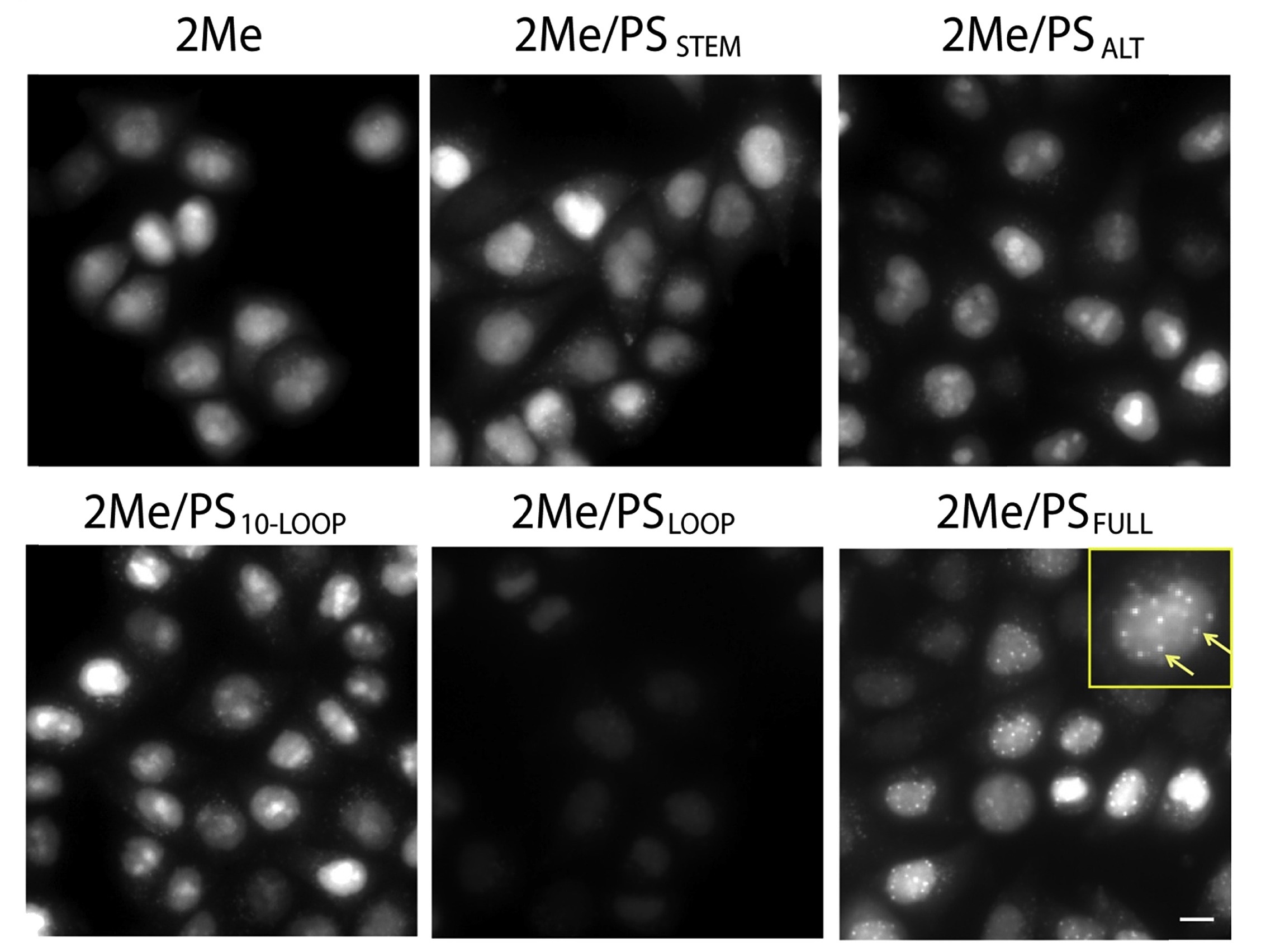Article-Single-molecule RNA imaging
Single-molecule detection and tracking of RNA transcripts in living cells using phosphorothioate-optimized 2′-O-methyl RNA molecular beacons
Abstract:
Molecular Beacons (MBs) composed of 2′-O-methyl RNA (2Me) and phosphorothioate (PS) linkages throughout the backbone (2Me/PSFULL MBs) have enabled long-term imaging of RNA in living cells, but excess PS modification can induce nonspecific binding, causing false-positive signals. In this study, we evaluate the intracellular stability of MBs composed of 2Me with various PS modifications, and found that false-positive signals could be reduced to marginal levels when the MBs possess a fully PS-modified loop domain and a phosphodiester stem (2Me/PSLOOP MB). Additionally, 2Me/PSLOOP MBs exhibited uncompromised hybridization kinetics, prolonged functionality and >88% detection accuracy for single RNA transcripts, and could do so without interfering with gene expression or cell growth. Finally, 2Me/PSLOOP MBs could image the dynamics of single mRNA transcripts in the nucleus and the cytoplasm simultaneously, regardless of whether the MBs targeted the 5’- or the 3′-UTR. Together, these findings demonstrate the effectiveness of loop-domain PS modification in reducing nonspecific signals and the potential for sensitive and accurate imaging of individual RNAs at the single-molecule level. With the growing interest in the role of RNA localization and dynamics in health and disease, 2Me/PSLOOP MBs could enable new discoveries in RNA research.
See full-text: https://doi.org/10.1016/j.biomaterials.2016.05.022

Yachen Ying PUBLICATION
Molecular Beacon 2′-O-methyl RNA Phosphorothioate Single-molecule RNA imaging